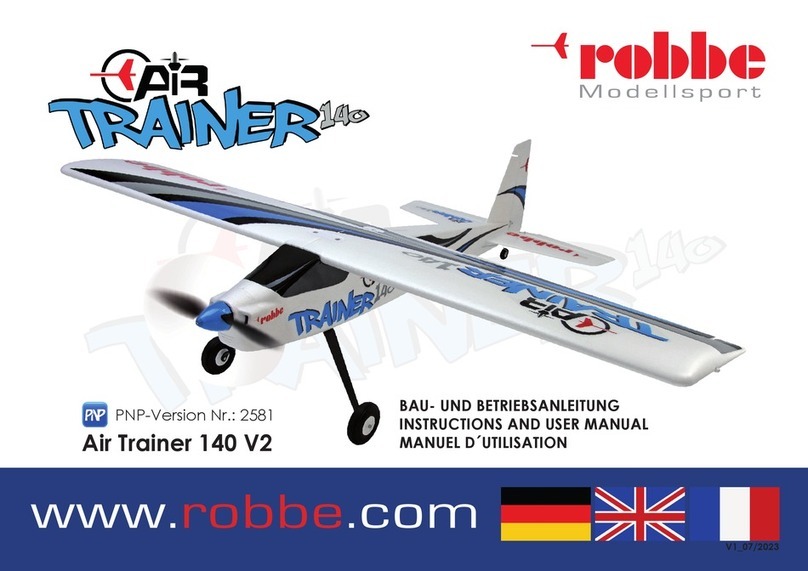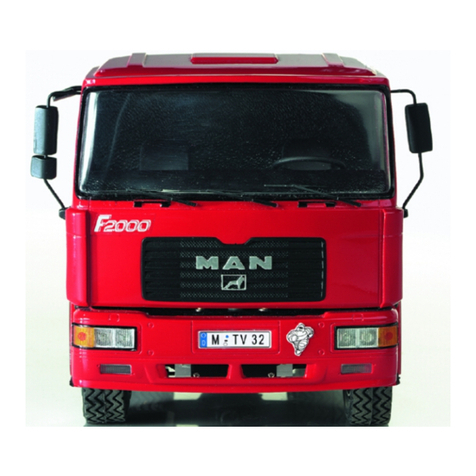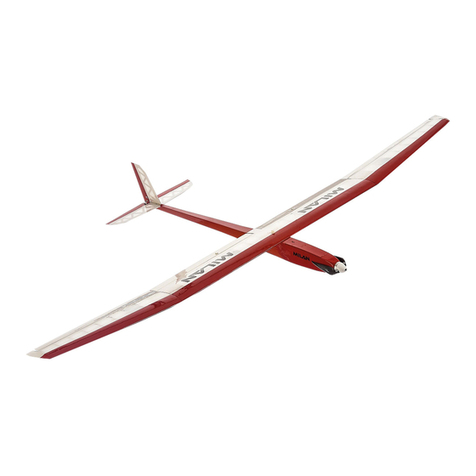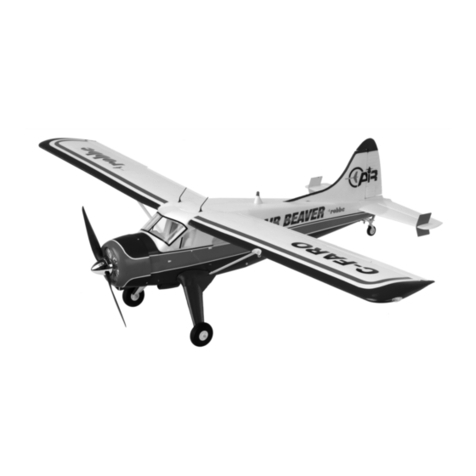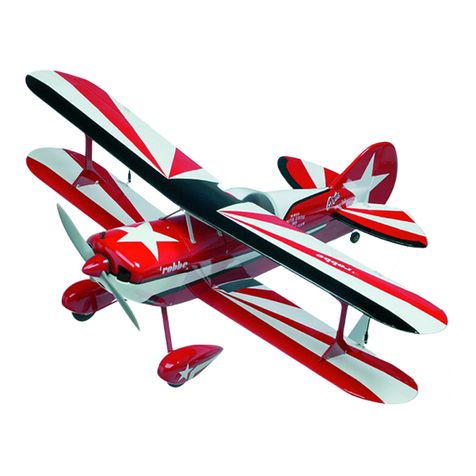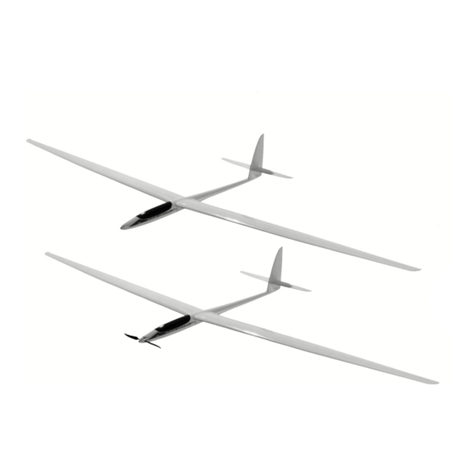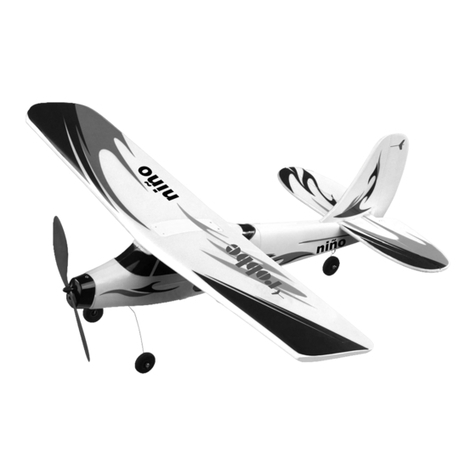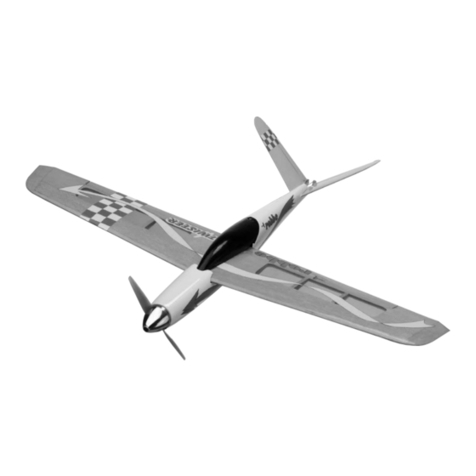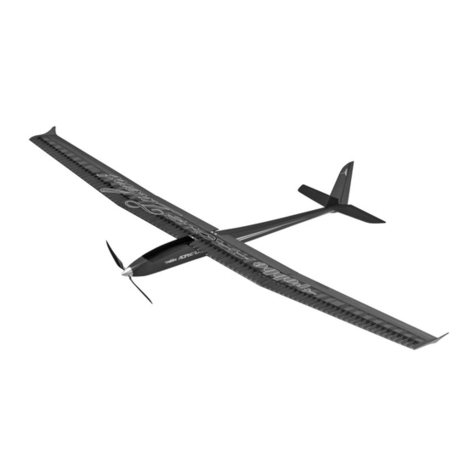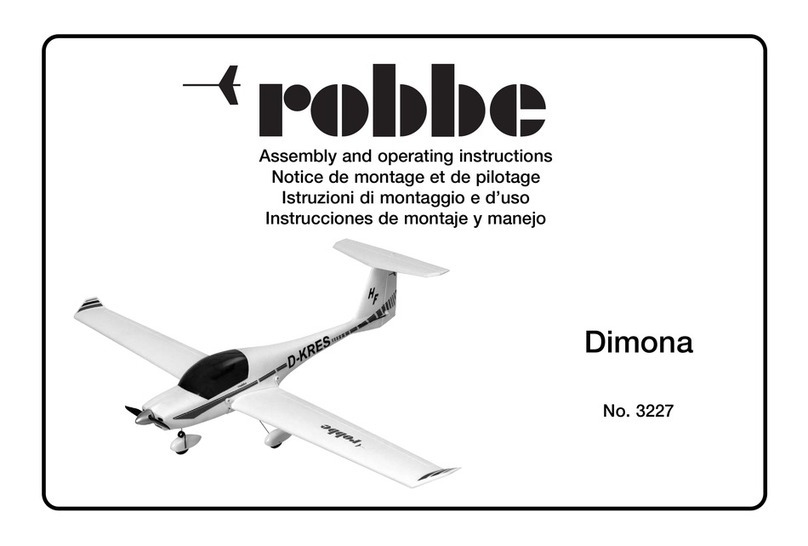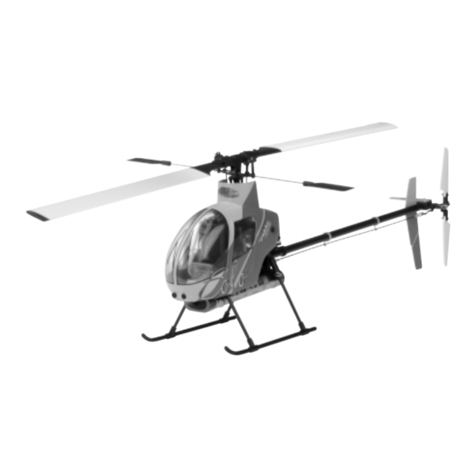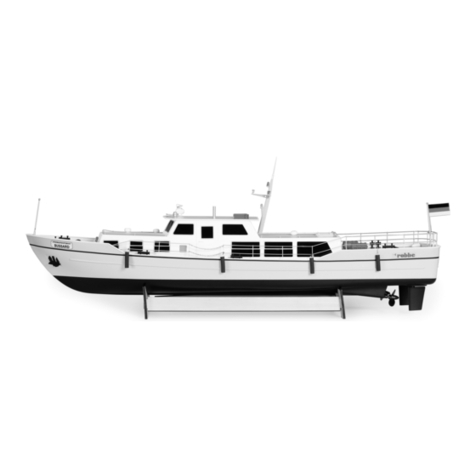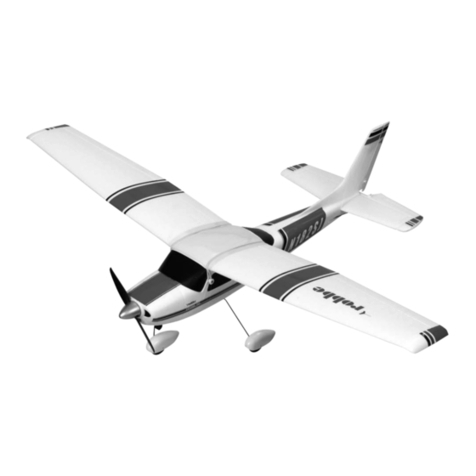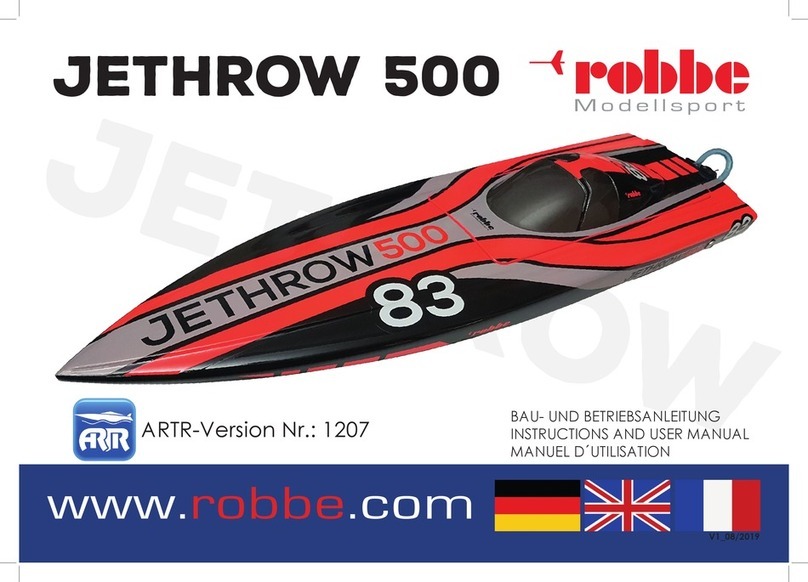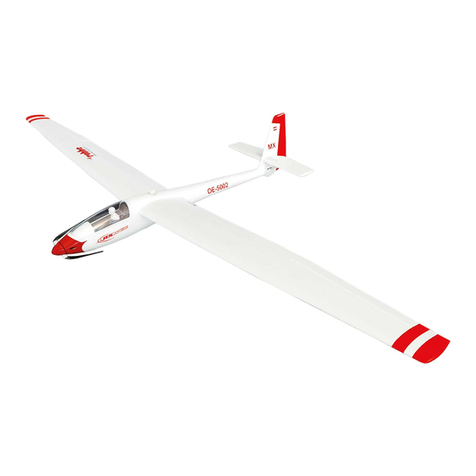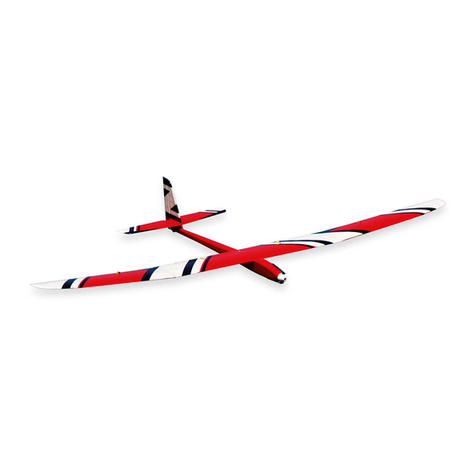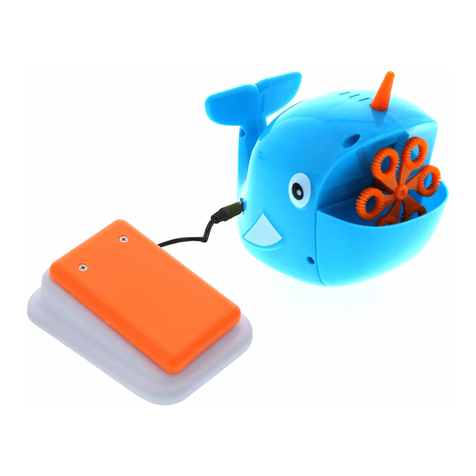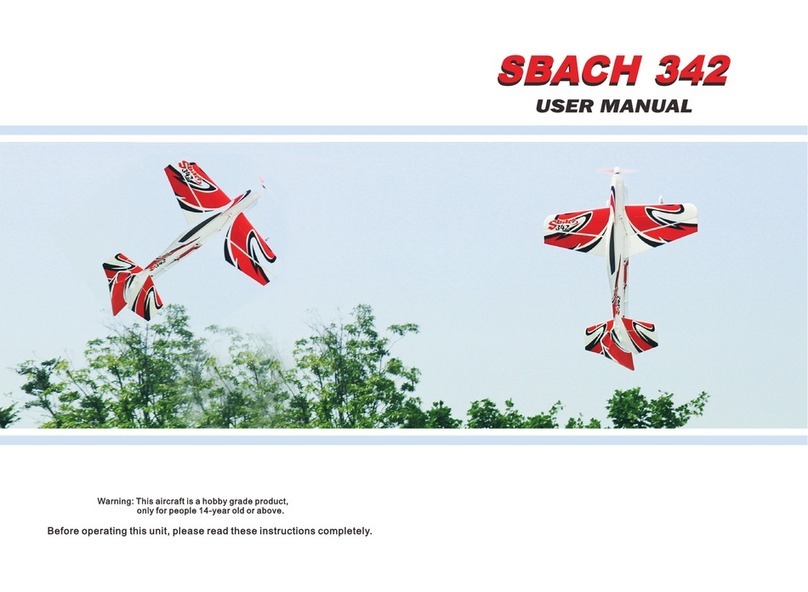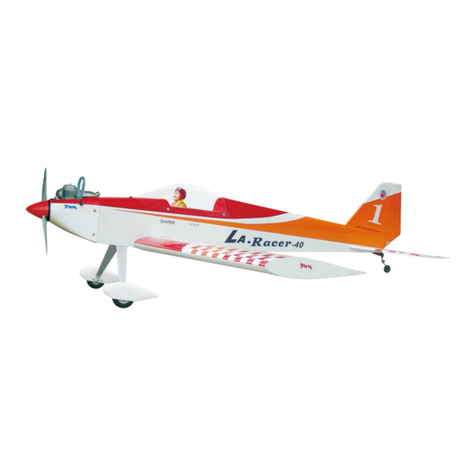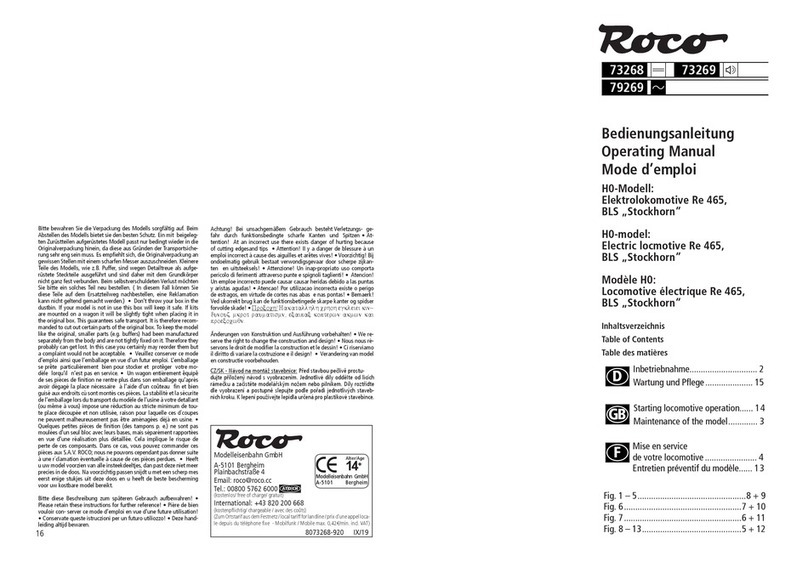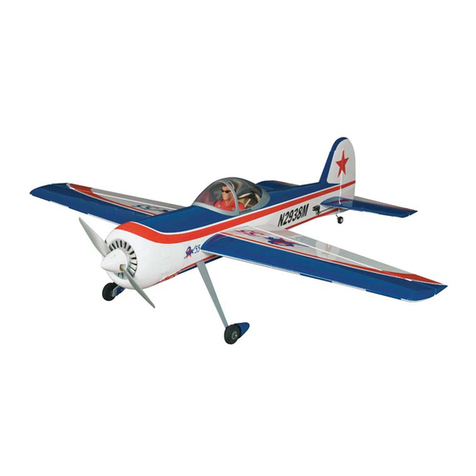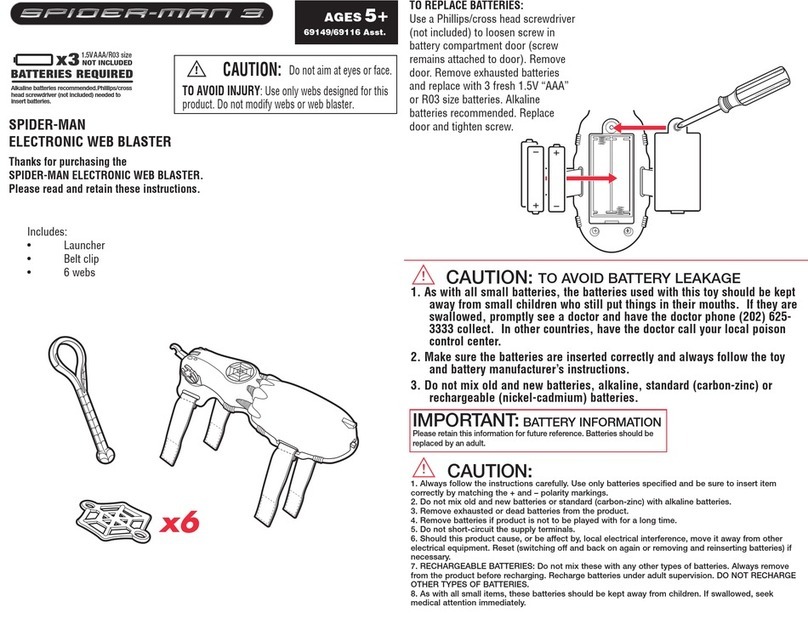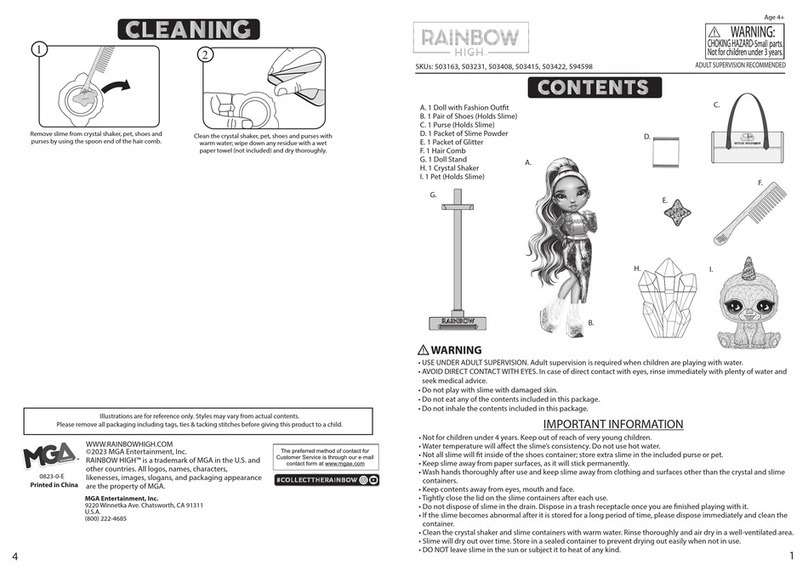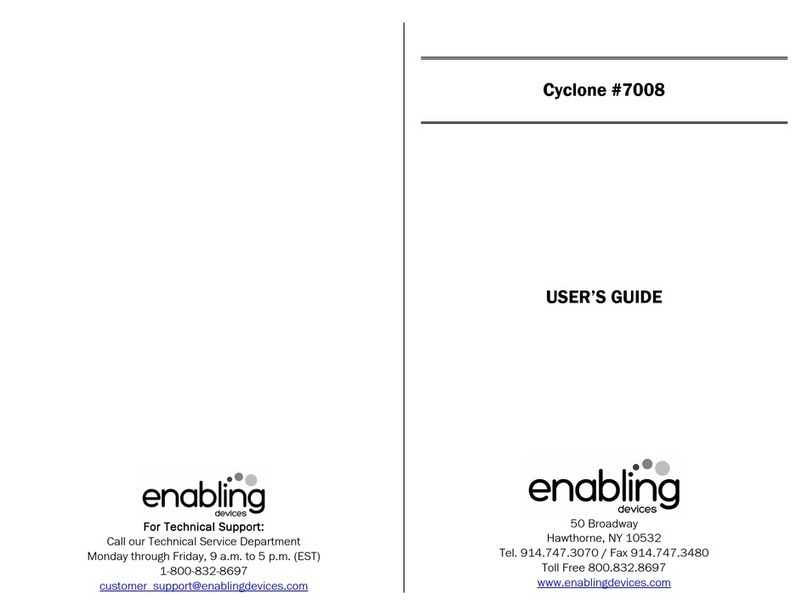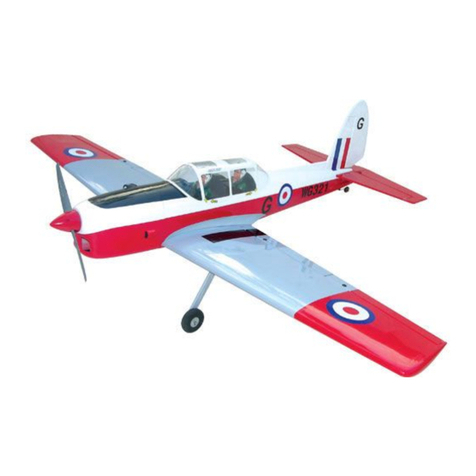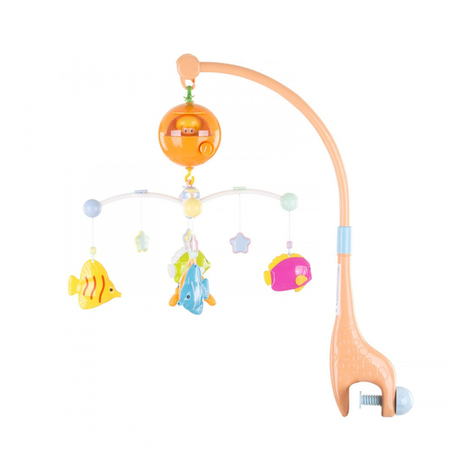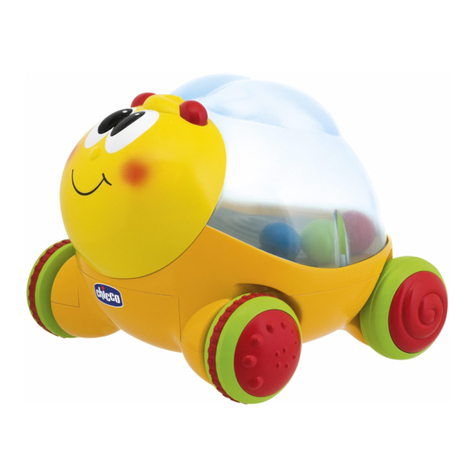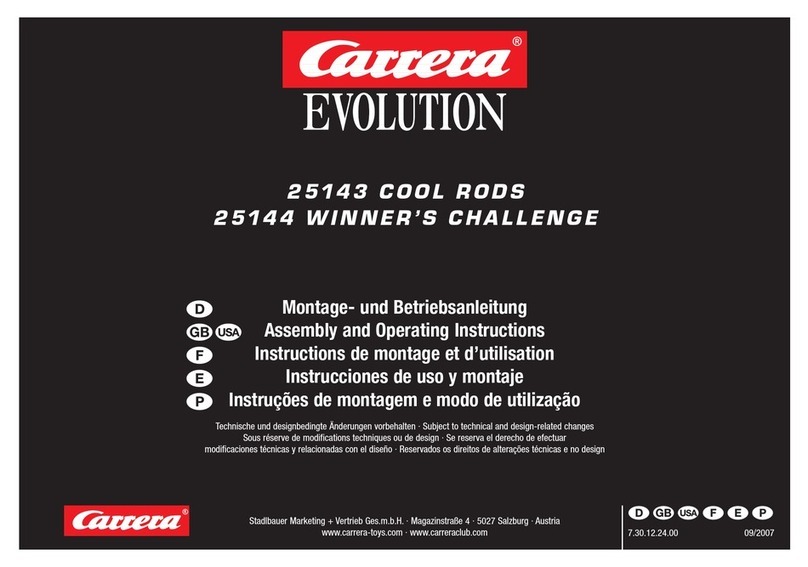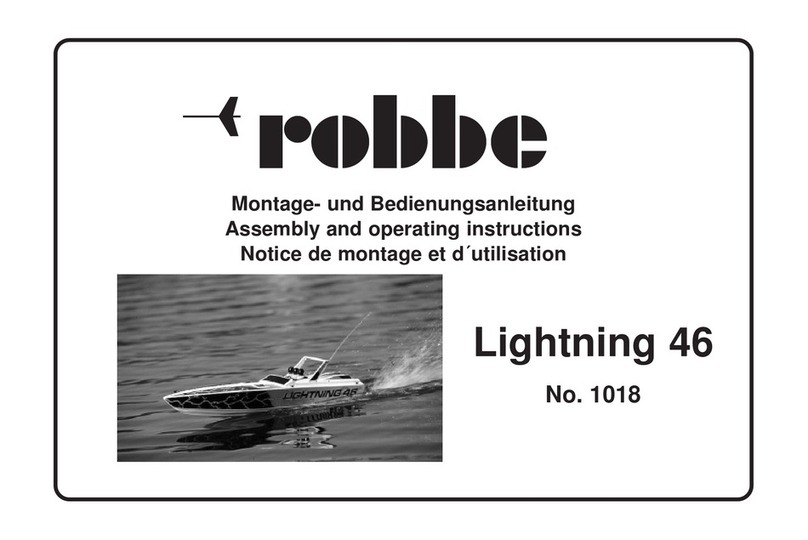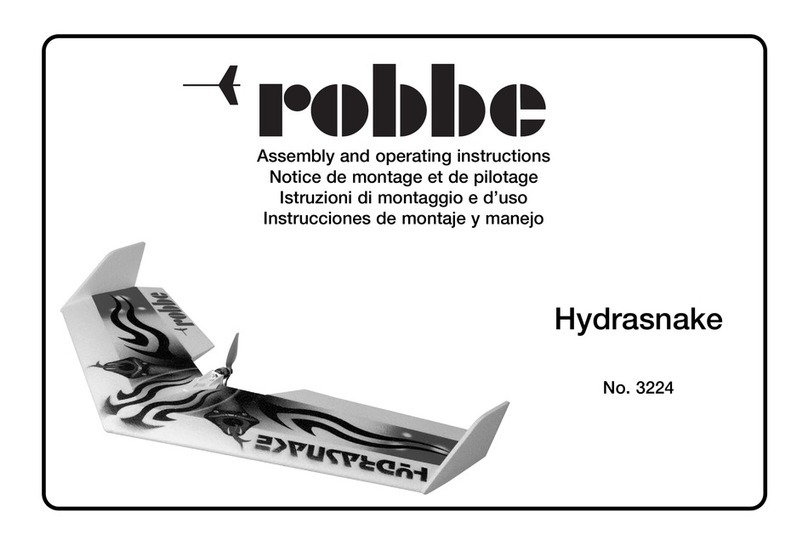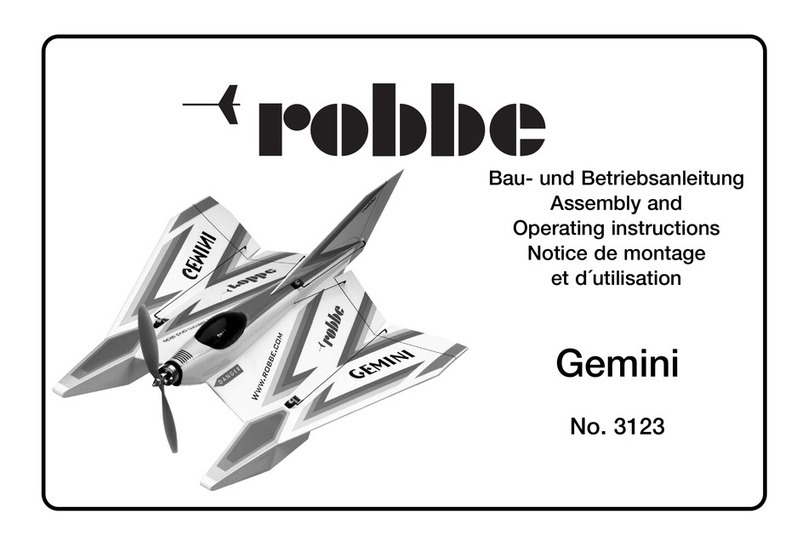
AMX - Jet
6
Caractéristiques techniques
Envergure : approx. 608 mm
Longueur totale : approx. 900 mm
Surface alaire totale : env. 12 dm²
Poids en ordre de vol : approx. 540 g
Charge alaire totale : env. 45 g/dm²
Cher Client,
Vous avez choisi un modèle de planeur entièrement assem-
blé de la Sté robbemodellsport. Nous vous en remercions.
Le modèle est prêt à voler après quelques opérations de
finition. Afin d'exploiter aux mieux les possibilités de ce
modèle et de le faire voler en toute sécurité, nous vous
recommandons la lecture attentive de la présente notice et
des feuillets d'information joints avant d'effectuer votre pre-
mière sortie.
Le modèle est proposé avec 2 variantes de peinture. Les
autocollants de décoration sont déjà appliqués.
L'équipement technique des modèles est identique.
La notice concerne les deux versions. Les illustrations
présentent le modèle monochrome.
Toutes les indications directionnelles telles que „droite“,
par exemple, sont à considérer dans le sens du vol.
Consignes concernant la motorisation du modèle
L’entraînement est constitué d’un moteur sans balais à
induit externe avec une hélice propulsive intégrée.
Le moteur est relié au variateur en l’état de marque et le
variateur est réglé en usine.
Pour la mise en service, il suffit simplement de raccorder
l'accu LiPo.
Consigne concernant l'ensemble de radiocommande
Pour piloter le modèle, il faut disposer d’un ensemble de
radiocommande disposant d’au moins 4 voies. Nous
recommandons particulièrement les ensembles de radio-
commande 2,4 G z.
Sont déjà implantés les servos des ailerons et des gou-
vernes de profondeur, les servos de gouverne de pro-
fondeur et des ailerons étant reliés entre eux par un cordon
Y.
L’alimentation électrique de l’ensemble de réception est
assurée par le système BEC intégré du variateur.
Le variateur se trouve sous le couvercle noir se trouvant
dans l’intrados du fuselage.
Lors de l'essai des fonctions, amener les servos au neutre
à l'aide de l'ensemble de radiocommande (manches et dis-
positifs de réglage de précision (trim) en position médiane).
Pour la mise en service disposer systématiquement le
manche des gaz en position „Moteur arrêt“, mettre
l'émetteur en marche. Raccorder d'abord l'accu.
Pour couper l'ensemble de radiocommande désolidariser
d'abord la connexion entre l'accu et le moteur, en suite
coupe l'émetteur.
Travaux de collage, colles appropriées
Ajuster d’abord tous les éléments “à sec” avant de les coller
définitivement.
Pour les travaux de collage, utiliser de la colle époxy.
robbe ropoxy , Réf. 5066
Uhu por (pour le couvercle en plastique)
Accessoires nécessaires à la mise en œuvre du modèle
Désignation Réf.
Chargeur, par exemple
Compact Duo Power 6S EQ 8506
ou
Duo Power 8S-EQ 8504
cordon-adaptateur
pour raccorder un égaliseur, par exemple 8214
(pour choisir le cordon-adaptateur observez
les instructions fournies par le chargeur)
contacts de connexion CT-2 4077
pour l’accu d’alimentation du moteur
gaine thermorétractable rouge / noir 5149
bande velcro 1713
Accu de rechange
1 accu Lipoly 3S 1P, 1300 mAh 32700004
Pièces détachées disponibles Réf.
kit turbine de propulsion sans moteur AMX Jet 32700001
moteur sans balais à induit externe AMX Jet 32700002
verrière de cabine + kit d'accastillage AMX Jet 32700003
Contenu de la boîte de construction
fuselage avec groupe propulseur, variateur et servos.
verrière de cabine transparente avec cockpit.
demi-ailes avec ailerons gauche et droite et servo
plans fixes horizontaux avec gouvernes gauche et droit
plan fixe vertical, dérive
2x timonerie d'aileron avec une extrémité en Z
2x timonerie de profondeur avec une extrémité en Z
1x Accu LiPo 3S 1P 1300 mAh 20 C
2x cordon Y
Fig. 1
- Coller la demi-gouverne de profondeur gauche dans la
concavité de la queue du fuselage. Le guignol doit être
orienté vers le bas.
Veiller au bon ajustement.
Fig. 2
- Coller la demi-gouverne de profondeur droite dans la
concavité de la queue du fuselage. Le guignol doit être
orienté vers le bas. Veiller au bon ajustement.
Notice de montage et de mise en œuvre
©robbe Modellsport
réf. 3270
réf. 3271





















